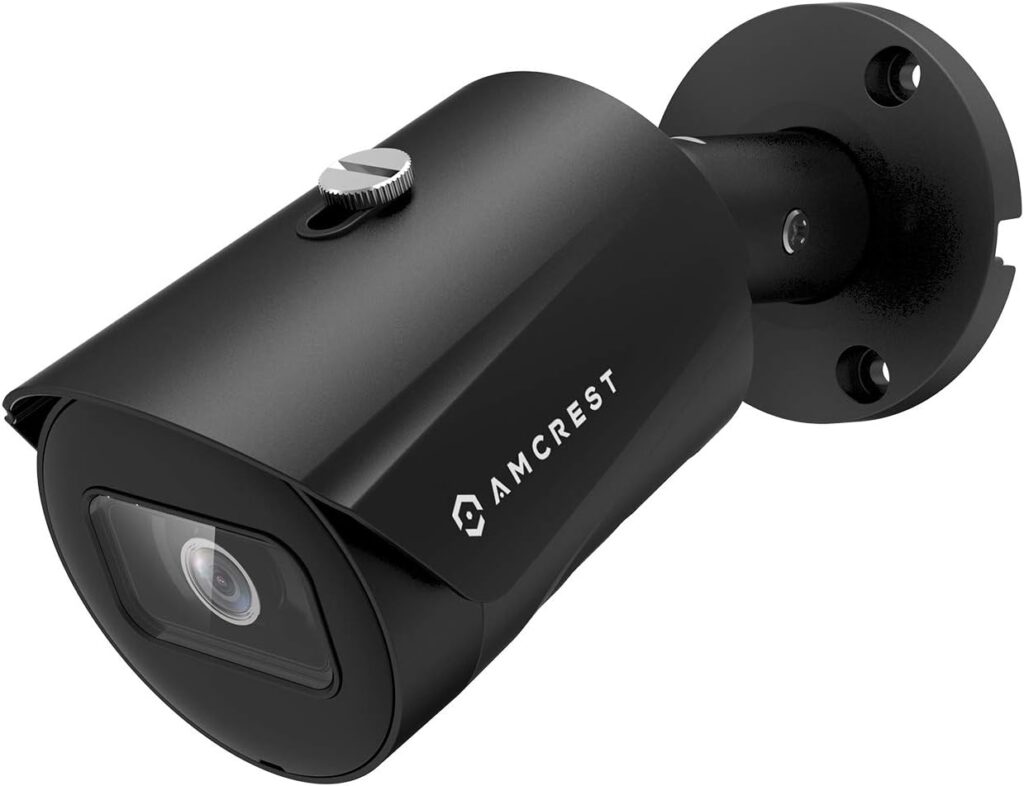

Table of Contents
ToggleWhat are Bullet Cameras
- Flat lens design: Prevents IR glare and formation of water spots
- Articulated mount: Articulated knuckle allows the camera to be installed in unique environments
- Integrated sunshield: Reduces glare from overhead and high angle lighting
Types of Bullet Cameras
There are various types of bullet cameras, each designed for specific surveillance needs and environments. In today’s era, we have learned how to make multi-purpose bullet cameras! Most of the many types of cameras have been combined. Here are the common types:
Analog Bullet Cameras:
These cameras use traditional analog technology. Analog bullet cameras transmit video using cables that you connect to a DVR (Digital Video Recorder). This processes and records the video footage. They are usually the most affordable than cameras for the bullet camera linage, making them cost-effective for smaller surveillance setups and still widely used today.
Wireless Bullet Cameras:
These cameras transmit video over Wi-Fi, eliminating the need for extensive wiring. They are popular for easy installation and remote access, though they may need power cables or battery changes. Wireless bullet cameras are often used for residential or small business applications. Wireless cameras can typically be accessed remotely via mobile apps or computer software, allowing users to view live footage and receive alerts from anywhere.
Infrared (IR) Bullet Cameras:
Equipped with infrared LEDs, these cameras provide clear images in low-light and total darkness, making them ideal for 24/7 surveillance. Infrared bullet cameras are commonly used in outdoor settings and places where lighting is limited. Some models have technology to reduce IR glare, providing sharper images at night. Others have smart IR features that adjust the infrared intensity to prevent overexposure when objects are close. Perfect for outdoor perimeters, parking lots, warehouses, and rural properties.
Varifocal Bullet Cameras:
These cameras feature adjustable lenses, allowing the focal length to be changed to focus on different areas. Varifocal bullet cameras are useful for monitoring areas where the field of view might need to be altered over time. Usually installed on walls or poles and are aimed at entrances, driveways, parking lots, and perimeters. Their fixed angle is suitable for monitoring specific areas.
Weatherproof or Outdoor Bullet Cameras:
Designed and built tough for outdoor use. These cameras have high IP ratings to protect them from rain, dust, and extreme temperatures. Their durable housings make them ideal for strong and harsh weather environments. Often built with a durable metal or high-quality plastic housing that prevents water and dust ingress. Some also feature UV-resistant coatings for protection against sun exposure. Designed to work in extreme temperatures, and many are capable of functioning in temperatures as cold as -22°F to as hot as 140°F.
How Weather resistant are bullet Cameras
Bullet cameras are generally quite weather-resistant, especially models specifically designed for outdoor use. Their weather resistance is measured using an Ingress Protection (IP) rating, which tells you how well the camera can withstand dust and water. It very important to .
Here are some factors related to their weather resistance:
IP Ratings: A typical outdoor bullet camera often has an IP65, IP66, or IP67 rating.
- IP65: Protected from low-pressure water jets from any angle, making it resistant to rain and dust.
- IP66: Can withstand more powerful water jets and harsh dust exposure, providing greater protection against the elements.
- IP67: The highest level of weatherproofing, able to endure brief submersion in water and provide dust resistance.
Temperature Range: Usually built to handle extreme temperatures, both hot and cold. Depending on the model, they may work in environments ranging from -22°F to 140°F or even more.
Materials and Sealing: The housing of outdoor bullet cameras is often made of durable, weather-resistant materials like metal or high-grade plastic. This protects against water seepage and dust. Also adds tampering protection.
Sun and UV Protection: Many come with UV-resistant casings that prevent sun damage over time, especially in hot climates where long-term exposure to direct sunlight could affect performance.
Protection Against Humidity and Corrosion: Some bullet cameras are treated to prevent rust and corrosion. Very important in humid or coastal environments where metal components might otherwise degrade. Most bullet cameras have strong interior components built to last long
These weather-resistant features make bullet cameras great for outdoor security needs, allowing them to reliably monitor areas exposed to rain, dust, sun, and varying temperatures.


Conclusion
Bullet cameras are amazing tools for a range of applications, both indoors but mainly outdoors, spanning from general surveillance to retail, commercial spaces, and even traffic and public safety monitoring. Their design allows for larger lenses, which enhances their ability to capture footage over extended distances. For instance, bullet cameras equipped with telephoto lenses are ideal for monitoring expansive spaces such as parking lots, airports, and highways. Meanwhile, compact bullet cameras with wide-angle lenses are better suited for closer monitoring, offering a wide field of view for comprehensive coverage at shorter distances.

